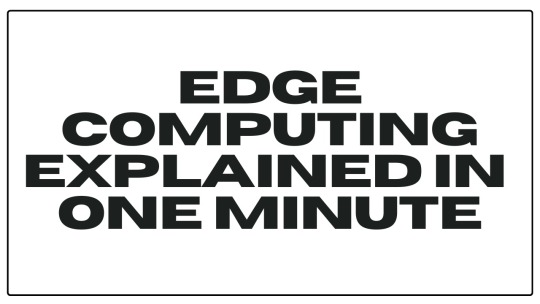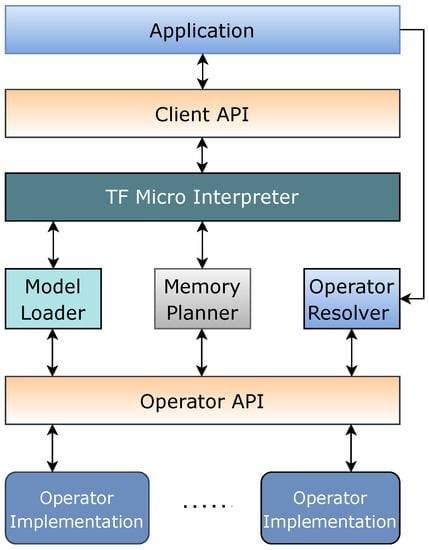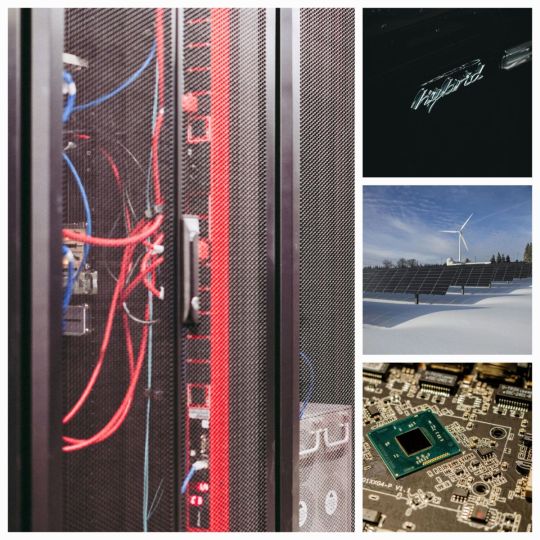#edge computing
Text
So I was trying my hand at making simple explanation videos.

I made my first one today. It is about edge computing explained in simple terms in a minute.
Do check out this video if you have a minute.
And don't forget to let me know what you think.
17 notes
·
View notes
Text
youtube
INTERESTED IN UPCOMING TECHNOLOGY??
check the above link 👆👆
10 notes
·
View notes
Text
Edge Computing, Real-Time Data Processing, and Intelligent Automation
In the dynamic landscape of the power industry, staying ahead of the curve requires a fusion of cutting-edge technologies and strategic operations. With over four years of experience in the field, our journey has been marked by innovation, efficiency, and resilience. In this article, we explore how the convergence of edge computing, real-time data processing, predictive fault diagnosis, and intelligent automation is revolutionizing the energy sector.

Edge Computing: A Powerhouse at the Edge
Edge computing is the bedrock upon which modern utility IT operations are built. By processing data closer to the source, we've reduced latency and increased responsiveness. This real-time capability has enabled us to make critical decisions swiftly, optimizing grid operations and minimizing downtime. The result? A more reliable and efficient energy distribution system.
Real-Time Data Processing: Harnessing the Flow
The ability to handle vast volumes of real-time data has unlocked new possibilities for the power industry. We've implemented advanced data analytics to monitor and control grid assets proactively. Predictive fault diagnosis and anomaly detection algorithms have become our allies in preventing potential failures, thus averting costly disruptions.
Predictive Fault Diagnosis: Proactive Maintenance
Predictive fault diagnosis is a game-changer in the energy industry. By leveraging historical data and machine learning models, we've gained the capability to predict equipment failures before they occur. This predictive maintenance approach has not only extended the lifespan of critical assets but has also significantly reduced operational costs.
Robotic Process Automation (RPA): Streamlining Operations
RPA has automated routine tasks, freeing up human resources for more complex problem-solving. In the power sector, this has led to improved efficiency in billing, customer service, and administrative functions. It's allowed us to allocate resources strategically and ensure a seamless experience for customers.
Intelligent Automation (IA): Powering the Future
Intelligent Automation (IA) goes beyond RPA, integrating AI and machine learning to make autonomous decisions. IA systems continuously learn from data, optimizing grid operations in real-time. It's a crucial component in our journey toward a smart grid, where energy generation, distribution, and consumption are finely tuned to meet demand efficiently.
In conclusion, the synergy of edge computing, real-time data processing, predictive fault diagnosis, RPA, and IA has transformed the power industry. We are no longer just energy providers; we are orchestrators of a reliable, efficient, and sustainable energy ecosystem. As we look to the future, our commitment to innovation remains unwavering, ensuring that the lights stay on and the power flows seamlessly for generations to come.
2 notes
·
View notes
Link
Synchronize data across one or many sites. File mirroring to one or many locations. Sync files between different operating systems, platforms, Bidirectional File Replication - Windows, Mac, Linux, Unix Flavors, Solaris, OpenBSD, IBM Spark, aix
#data synchronization#file mirroring#cloud computing#cloud platforms#cyber security#data protection#data management#edpcloud#real time#edge computing#data distribution
2 notes
·
View notes
Text







Tensorflow Lite
The rapid emergence of low-power embedded devices and modern machine learning (ML) algorithms has created a new Internet of Things (IoT) era where lightweight ML frameworks such as TinyML have created new opportunities for ML algorithms running within edge devices.
2 notes
·
View notes
Text

This report analyzes key players, including their market share, market size, growth drivers, and company profiles. The purpose of this research report is to provide an in-depth analysis of the market overview, prevalent trends, demand, and recent changes that are affecting the global edge computing market.
The study also discusses product launches, market expansion, strategic growth analysis, market potential analysis, and technological advancements. It provides market size, prospective expansion, trends, and leading competitors' expansion plans.
With the help of this report, you will be able to gain insight into the competitors' positioning, market scope, growth potential, and future prospects.
Our report provides in-depth insights into the leading players in the global edge computing market for the next few years. To gain a stronghold in the global edge computing market, these key participants have adopted various business strategies. As a result, other businesses can gain a better understanding of how market leaders maintain dominance and expand their customer bases to secure a majority share.
There are a number of major players in the edge computing market, including:
AT&T Inc., Amazon Web Services (AWS), Cisco Systems Inc., Fujitsu Limited, Dell Inc., IBM Corporation, Huawei Technologies Co. Ltd., Hewlett Packard Enterprise (HPE), Nokia Corporation, Microsoft Corporation
Request for Sample Report: https://www.nextmsc.com/edge-computing-market/request-sample
As part of this study, we will examine how COVID-19 impacted and altered the global edge computing market market environment. Demand, consumption, transportation, consumer behavior, supply chain management, exports, imports, and manufacturing are among the factors considered in the study. Furthermore, analysts have highlighted the elements that can help businesses identify opportunities in the near future and stabilize the industry.
Some of the key advantages discussed in this study report are a neutral outlook on market performance, recent industry trends, competitive landscapes and key players' strategies, potential and niche segments, and geographical regions contributing to promising growth.
Furthermore, the report provides historical, current, and future market sizes, along with a geographical forecast.
Depending on their industry verticals, the global edge computing market is divided into:
Energy & Utilities
Government & Public Sector
Healthcare
Manufacturing
Media & Entertainment
Transportation
Retail
Telecom & IT
Others
Global edge computing market applications can be categorized into:
Connected Cars
Smart Grids
Critical Infrastructure Monitoring
Traffic Management
Environmental Monitoring
Augmented Reality
Assets Tracking
Security & Surveillance
Others
A comprehensive analysis of all of the critical features of the global edge computing market industry has been conducted in the latest study. Market size, competition, development trends, niche markets, market drivers and challenges, SWOT analysis, Porter's five forces analysis, value chain analysis, and so on are covered from a macro-level to a micro-level.
According to the report, markets are categorized based on their component, industry verticals, organization size, applications, and regions, among other factors.
In order to be able to target products, sales, and marketing strategies accordingly, decision-makers must be familiar with the market segments. Businesses can advance product development by being guided on how to develop products tailored to meet the needs of different market segments.
Key stakeholders can use this market research report to develop plans for supporting the company's success by using statistics, tables, and graphs. It provides an in-depth analysis of the edge computing market across all major geographic regions, including North America, Asia-Pacific, Latin America, the Middle East, and Africa.
This report examines the dynamics of several regions in order to gain a clearer picture of the global market.
Read More: https://www.nextmsc.com/report/edge-computing-market
Inquire Before Buying: https://www.nextmsc.com/edge-computing-market/inquire-before-buying
About Us
Next Move Strategy Consulting is an independent and trusted third-platform market intelligence provider, committed to deliver high quality, market research reports that help multinational companies to triumph over their competitions and increase industry footprint by capturing greater market share. Our research model is a unique collaboration of primary research, secondary research, data mining and data analytics.
We have been servicing over 1000 customers globally that includes 90% of the Fortune 500 companies over a decade. Our analysts are constantly tracking various high growth markets and identifying hidden opportunities in each sector or the industry. We provide one of the industry’s best quality syndicates as well as custom research reports across 10 different industry verticals. We are committed to deliver high quality research solutions in accordance to your business needs. Our industry standard delivery solution that ranges from the pre consultation to after-sales services, provide an excellent client experience and ensure right strategic decision making for businesses.
For more insights, please visit, https://www.nextmsc.com
#edge computing#edge computing market#market analysis#market forecast#market growth#market trends#market share#market size#market value#market demand
3 notes
·
View notes
Text
Reimagining the Energy Landscape: AI's Growing Hunger for Computing Power #BlogchatterA2Z
Reimagining the Energy Landscape: AI's Growing Hunger for Computing Power #BlogchatterA2Z #AIdevelopment #energyConsumption #DataCenterInfrastructure #ArmHoldings #energyEfficiency #SustainableTechnology #RenewableEnergy #EdgeComputing #RegulatoryMeasures
Navigating the Energy Conundrum: AI’s Growing Hunger for Computing Power
In the ever-expanding realm of artificial intelligence (AI), the voracious appetite for computing power threatens to outpace our energy sources, sparking urgent calls for a shift in approach. According to Rene Haas, Chief Executive Officer of Arm Holdings Plc, by the year 2030, data centers worldwide are projected to…

View On WordPress
#AI Development#Arm Holdings#Custom-built chips#Data center infrastructure#Edge computing#Energy consumption#energy efficiency#Regulatory measures#Renewable Energy#Sustainable technology
0 notes
Text
Edge Computing vs Cloud Computing: Impactful Industry Applications

Selecting the right cloud computing strategy can be daunting, particularly when deciding between cloud and edge computing. Read our blog to discover the varied applications of these technologies in distinct industries.
0 notes
Text
#Edge Computing#Edge Computing Market#Edge Computing share#Edge Computing size#Edge Computing growth
0 notes
Text

Leading the Charge: Top Edge Computing Companies to Watch
Discover top-edge computing companies revolutionizing data processing and delivery. Learn about benefits, industries, FAQs, and key stats in the realm of edge computing. READ MORE
0 notes
Text
Exploring the Future: Navigating the Intersection of Metaverse, Artificial Intelligence, Web 3.0, Edge Computing, and Generative AI!

#techlifewell#metaverse#ai#edge computing#web3.0#generative ai#generative art#art#future tech#blog#artificial intelligence#ai art generation
0 notes
Text
Forget crowded data highways! Edge computing brings power to the source, unlocking real-time decisions - from self-driving cars to smart cities. ️ Join the revolution! #edgerevolution #Smartfuture #decentralizedtech #Nextgendata Daniel Reitberg
#artificial intelligence#machine learning#deep learning#technology#robotics#autonomous vehicles#robots#collaborative robots#edgecomputing#edge computing
0 notes
Text
Comparison of Cloud and Edge Computing for Modern Businesses

Wondering which one to choose between cloud computing and edge computing? This blog post compares edge and cloud computing in terms of scalability, use cases, reliability, latency, and more
0 notes
Text
Edge Computing: An Advantage or Threat for Cybersecurity
Today’s digital era is data obsessed and Edge Computing. With the growing number of IOT devices, an unprecedented amount of data is generated through different sources. This has ultimately given rise to an increase in cyber threats. All in all, effective data processing and the demand for robust security measures have become a mandate.
Small businesses and big-size industries are consistently working to protect their sensitive data from hackers or data breaches. In the realm of ever-evolving technologies, edge computing is a new frontier in cybersecurity. Edge computing is bringing about a lot of effects in a world that’s overcrowded with many cyber threats.
It’s far different from the centralized cloud system and consoles’ innovative approach to data processing. Nevertheless, as edges computing has numerous benefits, it also comes with challenges that must be overcome to ensure robust cybersecurity.
Read in Detail:
0 notes
Text
WHAT WOULD BE AN IDEAL SCENARIO FOR USING EDGE COMPUTING SOLUTIONS?
0 notes
Text
Understand Cloud Computing vs Edge Computing: Key Comparisons

Read the blog to know the difference between cloud computing and edge computing. Also, learn how these technologies shape the future of data processing and storage.
0 notes